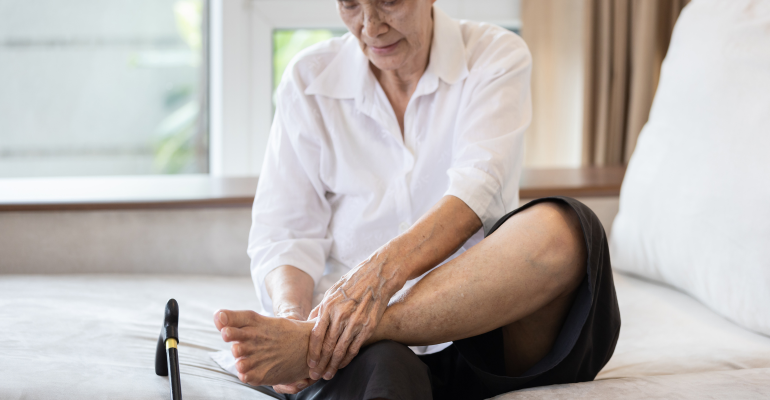Peripheral neuropathy is one of the most common peripheral nervous system diseases that affect adults globally. It is a chronic clinical condition where symptoms include numbness, tingling, prickling, and burning sensations in the hands and feet.
Peripheral neuropathy and neuropathic pain are highly prevalent in the general population with an estimated one in 10 people and one in two diabetics. As the total number of diabetic patients in Asia Pacific, Middle East and Africa is projected to reach 603 million by 2045, it is estimated that approximately 50 per cent of these patients will develop peripheral neuropathy in their lifetime.
A close look at statistics shows that Saudi Arabia alone ranks second highest in the Middle East and seventh in the world for diabetes, with over 65 per cent of its population affected, followed by the UAE, which recorded around 35 per cent.
Related: Breaking Borders: Providing World-Class Treatment for Peripheral Nerve Disorders in U.S. & Abroad
Diagnosing peripheral neuropathy is an unmet need with less than one-third of physicians being able to recognise signs of peripheral neuropathy, leaving around 80 per cent of patients undiagnosed and left to suffer in silence. Additionally, up to 50 per cent of patients are asymptomatic, and therefore often remain undiagnosed and at risk of insensate injury. Undiagnosed cases further contribute to high rates of morbidity and mortality led by diabetes.
Without successful intervention, estimates show that by 2050, one-third of 9.7 billion people may develop diabetes, half of those may experience peripheral neuropathy and half may suffer from neuropathic pain, which is frequently associated with severe symptoms such as depression, anxiety and poor sleep.
Collective action to raise awareness of this condition is essential, as early diagnosis is key to enabling better treatment outcomes and improved quality of life. Damaged nerves can also be regenerated if nerve care damage has not progressed too far. Each contact with a patient is an opportunity for primary care physicians to play a key role in diagnosing the condition.
As some patients might have difficulties in describing their symptoms properly, proactively probing for characteristics of peripheral neuropathy such as numbness, pins and needles and tingling sensation, lancinating, stabbing or electric shock-like pain can be a good starting point. Easy to perform sensory tests such as vibration perception testing, pinprick test, monofilament test, etc. take no longer than a few minutes and guide the diagnosis, while laboratory tests can help refine the diagnoses.
Other than knowledge about the condition, information on who is at risk, the consequences of peripheral neuropathy in relation to reduced quality of life, and increased risk of foot ulcers need to be disseminated to the public to encourage early self-referral. Once the diagnosis of peripheral neuropathy has been made, it is important to educate patients on its dangers.
At the same time, scientific forums help leaders and health experts from across the globe inspire, share and exchange clinical insights to help improve nerve health via understanding the etiology of peripheral neuropathy, conducting five simple steps of diagnosis, and providing timely management including improving B vitamins deficiencies.
It is critical that the full ecosystem of healthcare practitioners, pharmacists, key opinion leaders, government, media and companies come together to raise awareness of this acute public health issue, which is affecting millions of patients.
References available on request.
Tarek Abdelaziz is the General Manager at P&G Health Middle East.

